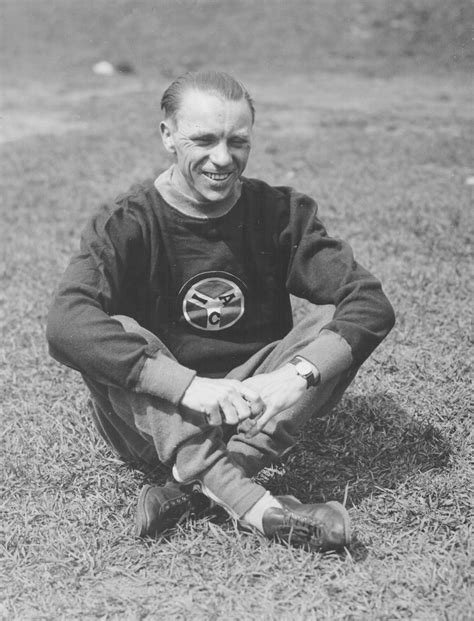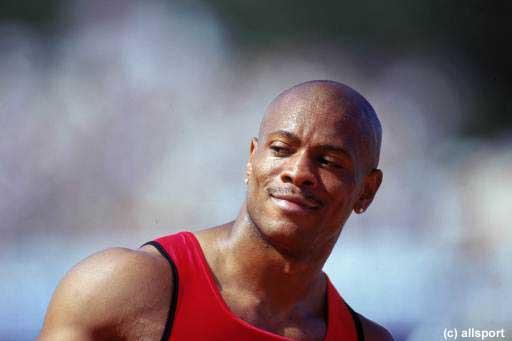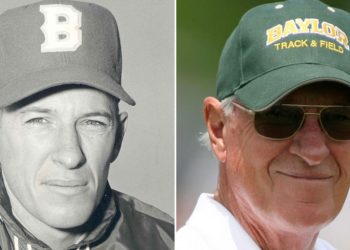Walt Murphy’s News and Results Service (wmurphy25@aol.com)
This Day in Track & Field–February 1
RelatedPosts
2003–The Columbia Shuttle broke up “16 minutes from home” as it was finishing up its mission. Pilot Willie McCool, the former captain of the Naval Academy’s x-country team, was one of seven crew members who perished on this day. Just a few days earlier, NASA officials in Houston had piped in John Lennon’s “Imagine” to the shuttle. After the song ended, McCool replied, “…that song makes us think that from our orbital vantage point we observe an Earth without borders, full of peace, beauty, and magnificence, and we pray that humanity as a whole can imagine a borderless world as we see it and strive to live as one, in peace…”
At the suggestion of Navy coach Al Cantello, a marker honoring McCool was placed on the Navy x-country course at a spot where he would have been “16 minutes from home” in the best race of his career.

From Senator John McCain’s speech later in the year:
“Before inviting his cross-country coach Al Cantello to the Space Shuttle Columbia launch, Commander McCool sent a portrait of himself to Cantello with the following inscription: `’Your coaching laid a foundation of discipline, drive and passion that has carried me across the many milestones of my life. With boundless appreciation, Willie.’ From that foundation, Commander McCool developed into a top-notch Naval Officer and served our country in an exemplary manner. On this Veterans Day, I humbly thank Commander McCool, and his family, for his selfless service and sacrifice for our country.”
Related Links(Take the time to read all of these stories):
Memorial: http://tinyurl.com/4t4j83zh
Statue in His Hometown of Lubbock, Texas
http://www.nasa.gov/vision/space/features/WillieMcCool_dedication.html
Senator John McCain
https://www.govinfo.gov/content/pkg/CREC-2003-11-11/pdf/CREC-2003-11-11-pt1-PgS14446-2.pdf
Runner’s World Article:
https://www.runnersworld.com/runners-stories/a20797368/the-story-of-willie-mccool/
NASA Bio
1922–World Records were set at the Millrose Games by Joie Ray in the Mile-and-a-Half (6:42.6) and Johnny Murphy in the High Jump (6-4 ¾ [1.95]. It was the 5th win in the last 6 years for Ray. Loren Murchison won the featured sprint for the 3rd time, equaling the World Record for 60-yards with his winning time of 6.4. He also won a separate race at 50-yards.
https://timesmachine.nytimes.com/timesmachine/1922/02/02/98976859.html?pageNumber=22

1936–Former Cornell star Joe Mangan came from behind off the final turn to win the Wanamaker Mile over the legendary Glenn Cunningham at the Millrose Games in NY’s Madison Square Garden. Cunningham, who was also passed by Gene Venzke in the final strides, was the 3-time Wanamaker defender and went on to win three more from 1937-1939). Some of the runners used a sprinter’s start!
Video: http://tinyurl.com/ylnymxq
https://timesmachine.nytimes.com/timesmachine/1936/02/02/85231469.html?pageNumber=122
1941–It was a slow early pace (2:13 at the ½-mile!) in the Wanamaker Mile at the Millrose Games, but that didn’t faze the 15,000 fans who were then treated to an exciting finish, with Walter Mehl holding off NYU’s Leslie MacMitchell for the win in 4:13.6.
https://timesmachine.nytimes.com/timesmachine/1941/02/02/85205486.html?pageNumber=123
1947—Gil Dodds (4:09.2) won his 2nd Wanamaker Mile at the Millrose Games by 40 yards. He first won the race in 1944 and would win for the 3rd time in 1948.
NYU’s Irving “Moon” Mondschein set a Meet Record of 6-7 ¾ (2.02+) in the High Jump.
https://timesmachine.nytimes.com/timesmachine/1947/02/02/93787034.html?pageNumber=147
1948–The exact date is unclear, but a new track and field publication called “Track and Field News” made its first appearance this month. The “Bible of the Sport” was co-founded by brothers Cordner and Bert Nelson, young fans who wanted to share their interest in the sport with others.
The magazine, a must for any serious fan of the sport, put the printed version on hold for awhile in favor of a more timely digital version of the publication, but is now offering both versions to subscribers. And it still produces one of the most informative T&F websites–http://trackandfieldnews.com/.
1963–A visiting contingent from the Soviet Union came away with three wins at the Millrose Games in Madison Square Garden.
Igor Ter-Ovanesyan not only beat Ralph Boston for the first time in the Long Jump, he also broke the 1960 Olympic champion’s Indoor World Record (26-6 ¼ [8.06]) with his winning leap of 26-10 (8.18).
Valeriy Brumel continued his dominance of John Thomas in the High Jump, clearing 7-2 (2.18+) to Thomas’s 7-1 (2.16).
And Valeriy Bulishev (1:50.8/European Record) was the surprise winner of the ½-mile over Ernie Cunliffe
(1:51.2).
Loyola’s Tom O’Hara outdueled Cary Weisiger (4:01.8) on the last lap to win the Wanamaker Mile with a Meet Record of 4:01.5.
Highlights(No Audio): http://www.aparchive.com/metadata/youtube/f9b0bbb7136149be98cb51b9781bd26a
https://vault.si.com/vault/1963/02/11/a-flying-start-for-the-ussr
Brumel-In His Own Words:
https://vault.si.com/vault/1963/02/04/the-big-jump-a-siberian-champion-tells-his-story
1965–Ron Clarke didn’t wait long to break his own World Outdoor Record for 5000-meters. Just 16 days after running 13:34.8 in Australia, he improved to 13:33.6 in Auckland, New Zealand.
WR Progression: https://en.wikipedia.org/wiki/5000_metres_world_record_progression
1971(New)—The Soviet Union’s Valeriy Borzov tied the World Indoor Record of 10.3 for 100-meters in Donetsk, Ukraine. He would go on to won the 100 and 200 at the following year’s Olympics in Munich.
1974(New)—George Woods became the first amateur to break the 70-foot barrier indoors in the Shot Put with his winning toss of 70-4 ½ (21.45) in Daly City,CA. He had set the previous record of 69-10 ¾ (21.30) just 6 days earlier. (Pro Brian Oldfield held the overall record of 70-10 ½ [21.60]).
1984(New)—Kyrgyzstan’s Igor Paklin set a World Record of 7-8 ¾ (2.36) in the High Jump in Milan
https://en.wikipedia.org/wiki/Igor_Paklin
1986–Joe Dial won the Pole Vault with a clearance of 19-4 ¾ (5.91) in Columbia, Missouri, to break Billy Olson’s week-old World Record of 19-3 ¾ (5.89)
WR Progression: http://en.wikipedia.org/wiki/Men’s_pole_vault_indoor_world_record_progression
1987–Patrik Sjöberg cleared 7-10 ¾ (2.41) in Piraeus, Greece, to set a World Record in the High Jump. Germany’s Carlo Thränhardt had set the previous mark of 7-10 ½ (2.40) only two weeks earlier.
WR Progression
http://en.wikipedia.org/wiki/Men’s_high_jump_indoor_world_record_progression
1987–Running at the Lady Terrier Invitational at Boston University, Lesley Welch (Lehane) won the 3000-meters in 8:44.05 to break the great Mary Slaney’s American Record of 8:47.3 (1982).
1987–Chip Jenkins set an American Record for 600-meters when he ran 1:15.80 in Sherbrooke, Canada. That mark lasted for 26 years until Duane Solomon ran 1:15.70 in 2013 in Glasgow.
1991—Marcus O’Sullivan (3:55.17) was thwarted in his bid for a 4th straight win in the Wanamaker Mile at the Millrose Games by Noureddine Morceli, who won in 3:53.50, the 2nd fastest time ever run in the iconic event.
Wilson Waigwa (4:13.05) beat Rod Dixon (4:13.32) in the Masters Mile, with both bettering the World Masters Record of 4:15.47.
32-year old Greg Foster won the 60-meter hurdles in 7.48 (his 8th win at Millrose).
Ray Brown (1:49.80), the “hardest working man in T&F”, edged Stanley Redwine (1:50.06) to win the Men’s 800m.
https://timesmachine.nytimes.com/timesmachine/1991/02/02/407291.html?pageNumber=43
Videos: M-Mile M800 M60 W800 M400 W-Mile Masters Mile
1998–Haile Gebrselassie showed his great versatility by running 3:31.76 for 1500-meters in Stuttgart. That was the 2nd-fastest indoor time in history (at the time), trailing only Hicham El Guerrouj’s then-World Record of 3:31.18. A close 2nd to Geb (now #5 All-Time) was Laban Rotich, who ran 3:32.11 (Now #6-Performer All-Time). (Ethiopians Samuel Tefera and Yomif Kejelcha ran 3:31.04 [WR] and 3:31.25, respectively, in 2019).

Maurice Greene set a short-lived World Record of 6.41 for 60-Meters. He would lower the record to 6.39 two days later!
https://www.worldathletics.org/athletes/ethiopia/haile-gebrselassie-8774
2002—Laban Rotich (3:57.04) won the Wanamaker Mile at the Millrose Games over fellow Kenyan Bernard Lagat (3:57.36). Lagat, the winner the previous year, would win a record total of 8 Wanamaker Miles.
Results: http://www.flashresults.com/2002_Meets/indoor/millrose/millrose.htm
2003–Stacy Dragila jumped 15-5 ½ (4.71) at the Reggie Lewis Center in Roxbury Crossing(MA) to break her own American Record of 15-5 (4.70m), which was set in 2001.
A World Record was set by Regina Jacobs, who won the Women’s 1500-Meters in 3:59.98 (still the American Record).
Results: http://www.nbindoorgrandprix.com/meet-info/history/history-2003/
2004—Russia’s Olga Kotlyarova set a World Indoor Record of 1:23.44 for 600-Meters in Moscow. The record stood until 2023 when Great Britain’s Keely Hodgkinson ran 1:23.41 in Manchester, England.
2008—Bernard Lagat (3:57.51) won the Wanamaker Mile at the Millrose Games for the 6th time. Next across the line were Australia’s 6’-3” (1.90+) Craig Mottram (3:57.90), New Zealand’s Nick Willis (3:58.14), and Galen Rupp (4:02.17).
Kara Goucher (4:36.03) edged Sara Hall (4:36.11) to win the Women’s Mile.
Winner of the High School Boys Mile in 4:13.86 was Kyle Merber (Half Hollow Hills West,NY), who fought off a challenge from Robby Andrews (Manalapan,NJ/4:14.60).
Both would return to the Millrose Games and the Wanamaker Mile as pros, with Merber’s best finish being 3rd in 2017, while Andrews was 4th in 2016.
Merber, the former American Collegiate Record holder at 1500-Meters (3:35.59), currently works for Michael Johnspm’s “Grand Slam Track”.
https://www.nytimes.com/2008/02/02/sports/othersports/02run.html?searchResultPosition=7
Results: https://flashresults.com/2008_Meets/indoor/Millrose/index.htm
Videos: M60h W60 M-Mile HSB Mile
Past Wanamaker Mile Winners
http://www.runningpast.com/wanamaker_mile.htm
2014-Ethiopia’s Genzebe Dibaba ran 3:55.17 for 1500-meters on a newly-surfaced track in Karlsruhe, Germany, to smash the previous World Record of 3:58.27, which was set by Russia’s Yelena Soboleva in 2006.
IAAF/WA Report: https://www.worldathletics.org/news/report/genzebe-dibaba-world-indoor-1500m-world-recor
Video: https://www.dailymotion.com/video/x1atemq
2014-Junior Alexa Efraimson (Camus,WA) ran 9:00.16 for 3000-meters, the fastest time ever run by a prep, indoors or outdoors, on the oversized track at the University of Washington
Significant Birthdays
Born On This Day*
Ekateríni (Katerina) Thánou-Greece 50 (1975) 2000 Olympic silver medalist-100m;
1999 World Indoor Champion-60m
3-time medalist in the 100 at the World Championships—1999 (bronze), 2001 (silver), 2003 (bronze)
2002 European Champion-100m; PBs: 6.96 (1999), 10.83 (1999)
Was barred from competing at the 2004 Olympics in Athens after missing a doping test right before the
Games started. Had claimed that she and fellow Greek sprinter Costas Kenteris missed the
test because they were involved in a motorcycle accident, but they were both found guilty of
staging the incident (a ruling that was later overturned!). Returned to competition in 2007
after serving a 2-year ban, but the IOC ruled that she couldn’t compete at the 2008 Olympic Games
because of her past history. In addition, when Marion Jones was stripped of her 2000 gold medal in
the 100, the IOC refused to reallocate the medal to Thanou.
https://en.wikipedia.org/wiki/Ekaterini_Thanou
https://www.bbc.com/news/world-europe-13348770
Deceased
Graeme Hammond 86 (1858-Oct.30, 1944) Columbia University student won the 440y at the 2nd IC4A Championships in
1877, setting the first “accepted” American Record of 54.0 in Mott Haven,NY.
Hammond also won the 880y in 2:20.5 and finished 2nd to teammate W.Bearns in the Mile. Hammond had entered the
Mile solely to offer some competition for Bearns and had no intention of putting out a full effort. This didn’t sit well
with some of the students who had bet on Hammond, unaware of his pre-race intentions! (From the NY Times
Archives)
Hammond went on to become much better known in another sport. Known as the “Father of American fencing”, he
represented the U.S. in that sport at the 1912 Olympics and is a member of the sport’s Hall of Fame. He also served
as the President of the New York Athletic Club.
He had a brush with fame of another sort when he was a youngster–From his Wikiipedia bio: “…was the son of
neurologist and Surgeon General of the United States Army Brigadier General William Alexander Hammond. The
Hammond family lived in Washington D.C. during the American Civil War. Graeme Hammond later recalled his regular
trips as a young boy, accompanying Abraham Lincoln to visit wounded soldiers during the war. “I shall never forget
the sweetness of the man nor the understandings which he showed in dealings with a little boy”.
I originally reported that Mott’s 54.0 was the first official time recorded for the ¼-mile, but Hall-of-Famer Frank Zarnowski, better known for his historical documentation of the decathlon, set me straight with the following note:
“The 440 was a standard distance in the U.S. going back to the 1850s. And many of the races were timed. Colleges
offered it as a standard event at the annual collegiate champs in 1875, the meet that morphed into the IC4A the
following year. At the time all of the records were kept by newspapers…in the 1870s the ‘Spirit of the Times’ was the
designated record keeper and by the 1880s annually published American and collegiate bests. The college champs
(nee: IC4A) moved from Springfield(MA) to Saratoga(NY) to Mott Haven(NYC) and then to Manhattan Field. No tracks
were perfect (e.g., the Manhattan AC track was 1/3rd mile, and not level) but the Spirit of the Times accepted marks
from it. The first college champs meet 440s were run on trotting tracks, measured 3 feet from the “curve”. Sometime
in the early 1880s the SofT dropped these 440 times as records, but maintained the list of winners. They ‘accepted’
Hammond’s time from Mott Haven where the IC4A moved its meet in 1877, therefore his 54.0 may have been the
first on a 440 yard facility built just for T&F (although this is also doubtful). By 1877 at least 20 colleges were running
annual field days and many had accurately surveyed tracks…e.g. Dartmouth fit an accurately measured (by the
Engineering School in 1875) 440 yards track on the Green”.
http://en.wikipedia.org/wiki/Graeme_Hammond
https://www.alpost754.org/our-first-commander/
https://www.olympedia.org/athletes/23716
For Subscribers: https://timesmachine.nytimes.com/timesmachine/1877/07/07/80651913.html?pageNumber=8






















